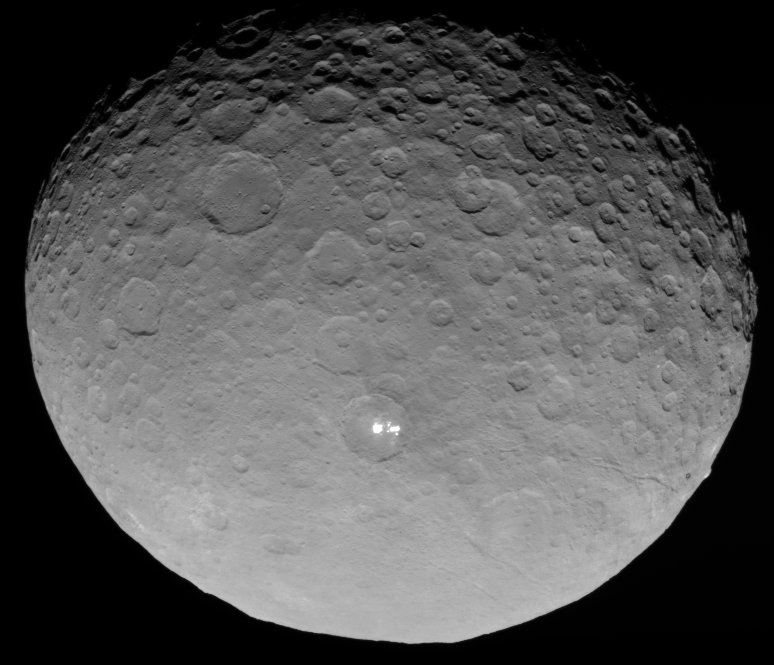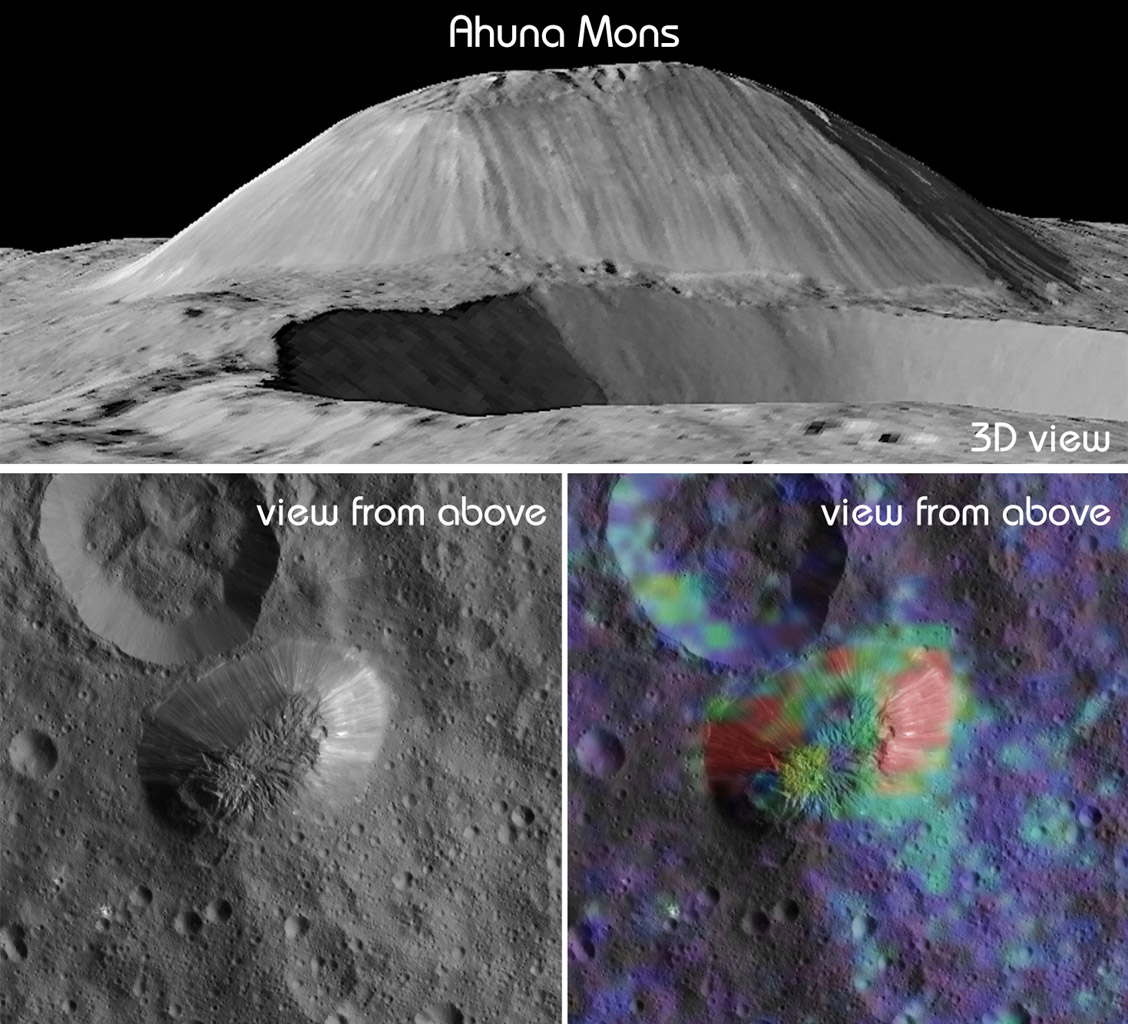
While the volcanoes on Earth eject fiery lava, ash, and smoke, those on Ceres, a dwarf planet that orbits between Mars and Jupiter, have been spewing ice throughout its history. The chain of events leading to the discovery began in 2015 when NASA’s spacecraft Dawn, sent to explore the asteroid belt where Ceres resides, captured some high-resolution images of its icy, rocky terrain. On the dwarf planet’s crater-covered surface, was a solitary 4-km ( 13,000 feet) tall mountain.
NASA researchers, excited at the discovery of the dwarf planet’s first cryovolcano, or ice volcano, named it Ahuna Mons. They estimated its age to be about 200 million years – too old to be erupting but young enough to suggest recent volcanic activity. What puzzled the experts, however, was the “young” Ahuna Mons’ lonely existence. It was hard to believe the 4.6 billion-year-old Ceres, whose core had cooled many years ago, had suddenly become active within the last few million years. Michael Sori, a researcher at the University of Arizona Lunar and Planetary Laboratory, said, “It’s pretty difficult to come up with a reason why Ceres, or any other body, would be volcanically dead for the first 99 percent of its life and then all of a sudden turn on yesterday, relatively speaking.”

The volcano’s discovery led Sori and his team to believe that Ceres had been geologically active throughout its existence. They suspected that the ice volcanoes, raised over time, had been flattened due to a natural process known as viscous relaxation. This is similar to when a blob of viscous material, such as honey or putty, collapses under its own weight and oozes outward before eventually flattening into the surrounding area. "Rocks don’t do that under normal temperatures and timescales, but ice does," Sori said. Given that Ceres is made from both ice and rock, the theory was certainly plausible.
To confirm the hypothesis, the researchers studied images taken by Dawn’s onboard camera for evidence of older, deformed volcanoes that looked like relaxed domes or mountains which had been flattened over time. Sure enough, after scouring Ceres’ 1 million-square-mile surface, the team was able to discover 22 such formations, Ahuna Mons included. They ranged from 16 km (52,493 feet) to 86 km (282,200 feet) wide and 1.1 km (3,608 feet) to 4 km (13,000 feet) high. The scientists compared the structures to computer simulations, to determine the age of each collapsed formation. "We found that one volcano forms every 50 million years," Sori said.
The researchers, who published their findings in the journal Nature Astronomy on September 17, 2018, estimate that the volcanoes probably spew an average of 3,000 cubic yards of cryovolcanic material each year. Though enough to fill a movie theater or four Olympic-sized swimming pools, it is substantially lower than the rocky volcanoes on Earth which generate more than 1 billion cubic yards of material in a year. Moreover, volcanic eruptions on Ceres are much more subdued than those on Earth. Instead of exploding violently, Ceres’ volcanoes gradually release a mixture of ice, rock, and other chemicals onto the surface.

The cause of the cryovolcanic eruptions on the dwarf planet is still a mystery. Researchers hope they may be able to find answers as space probes are sent out to investigate other solar system bodies where evidence of ice volcanoes has been detected. These include Pluto and its moon Charon, as well as Jupiter’s moon Europa, which, some scientists suspect, is home to numerous ice volcanoes.
Discovered in 1801 by Italian astronomer Giuseppe Piazzi, Ceres, which orbits 200 million miles away from the sun, was the first asteroid to be discovered. It is also the largest object in the asteroid belt and the only dwarf planet located in the inner solar system.
Resources: uanews.arizona.edu, zmescience. com, theatlantic.com
